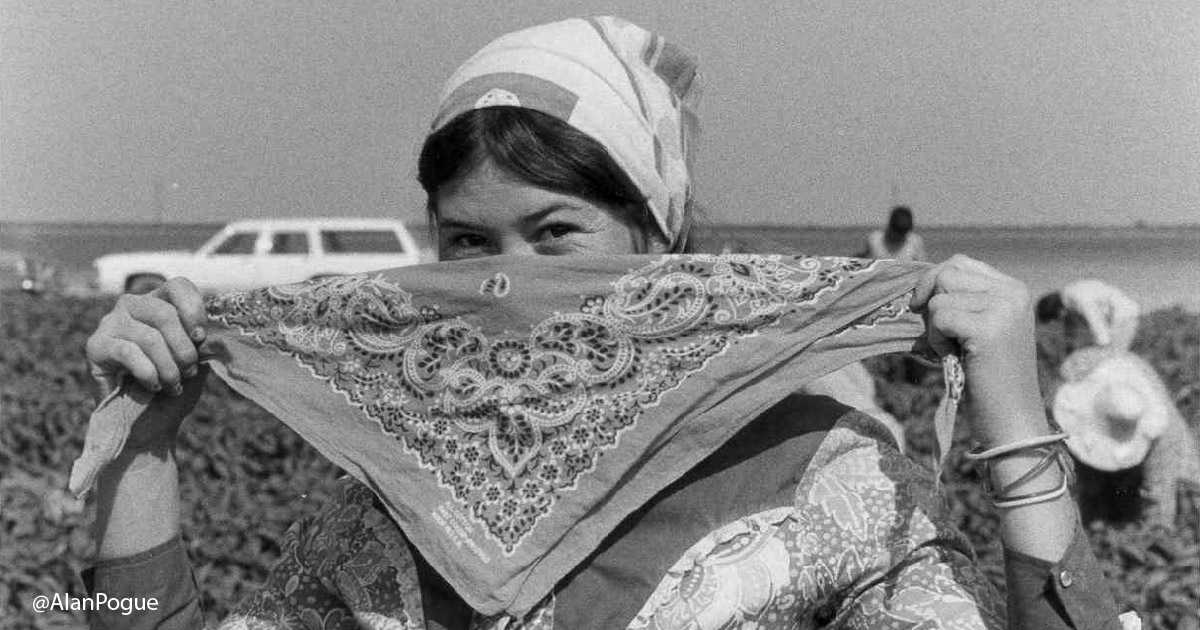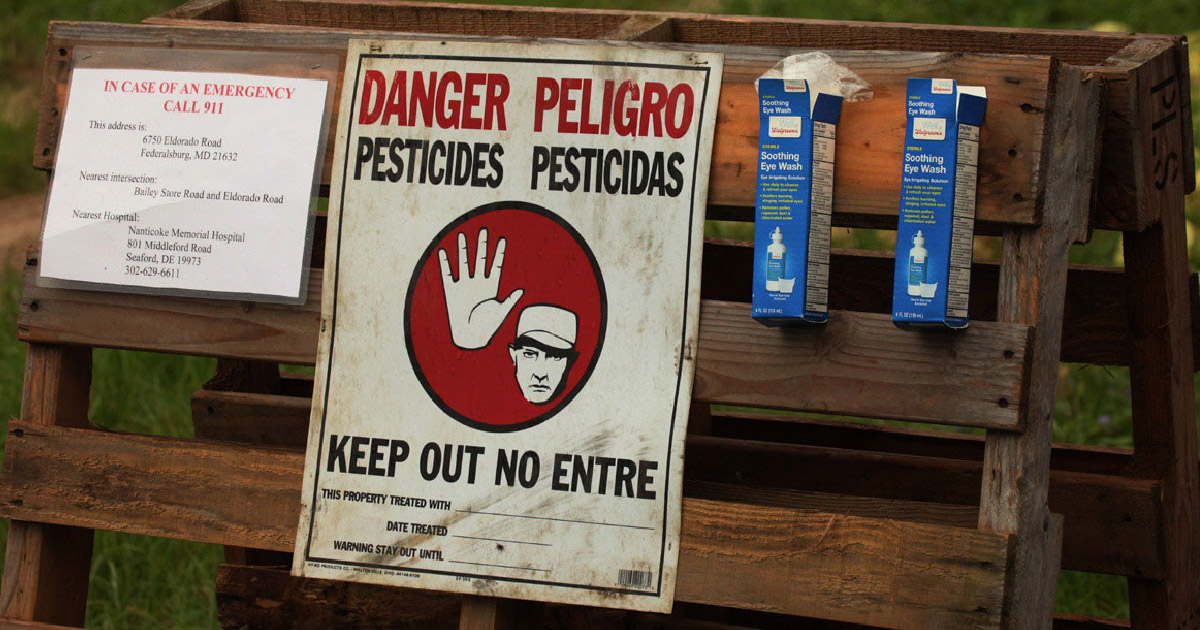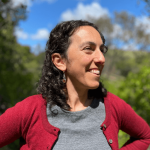Medical-Legal Partnership: Helping Pregnant Agricultural Workers Avoid Pesticide Exposure with Aaron Voit, Esq.

photo credit: Alan Pogue
In the spring, the California Department of Pesticide Regulation announced that 209 million pounds of pesticide active ingredients were used in 2016 across the green fields of the Golden State, ranking 2016 as the third highest-use year on record. In Monterey County, in California’s fog-defined Central Coast where lettuce and other greens grow year-round, nine million pounds of pesticide active ingredients were applied, an increase of four percent over 2015. That same year, ten of the 30 zip codes with the heaviest pesticide use in California were located in Monterey County -- and more than 18,000 students attend school next to fields that spray highly hazardous pesticides – the most of any county.
With such intensive and growing pesticide usage comes a myriad of health concerns. “It’s a huge issue in agricultural communities -- not just in California, but all across the US,” says Aaron Voit, Esq., the Equal Justice Works Fellow for California Rural Legal Assistance (CRLA) who has made pesticide exposure in Monterey County the focus of a new medical-legal partnership. CRLA and the Monterey County Health Department have teamed up to eventually provide legal services to pesticide-exposed patients at all of the county health department’s nine community health center look-alike clinics, which serves roughly 170,000 people per year.
Like many medical-legal partnerships, Voit aims at addressing both systems-wide issues while also providing legal assistance to individual patients. CRLA has a long history of agricultural worker advocacy, Voit says, “so when it came time to think about how we could deepen our efforts to work on pesticide exposure, it became clear that one of the pieces that was missing was direct intervention for victims of pesticide exposure.” Migrant Clinicians Network, which has worked directly with frontline providers to help them better recognize, manage, treat, and report pesticide exposure in the primary care setting for over 15 years, applauds CRLA’s efforts.

“It’s important for primary care clinicians in farming communities to rapidly recognize and treat pesticide exposure and prevent delays in diagnosis, which may help victims avoid long-term disability or other harm,” noted Laszlo Madaras, MD, MPH, MCN’s Co-Chief Medical Officer and a clinician in a large farming community in south-central Pennsylvania. “A good first step is being aware enough to ask the right questions during the initial taking of history. MCN has been collaborating with community health centers on the training of these efforts -- and it’s great to see CRLA taking up the charge as well.”
Why Medical-Legal Partnership?
Today, community health centers largely recognize that improvement of health outcomes necessitates the recognition and mitigation (and, if possible, the elimination) of social determinants of health. Social workers on staff, community health workers reaching out in underserved neighborhoods, and partnerships with community-based organizations are potent remedies in actively reducing health disparities. Indeed, for many health centers, such outreach has been woven into the standard of care. Medical-legal partnerships bring attorneys into the health center as specialists. Clinicians can refer their patients to a lawyer for services related to their health just as clinicians refer patients to a mental health counselor or nutritionist. Medical-legal partnerships are yet another avenue through which health centers can address structural disparities that harm the health of vulnerable patients.
The partnership’s first priority is for the most vulnerable in the fields: agricultural worker women who are pregnant. The Center for the Health Assessment of Mothers and Children of Salinas (CHAMACOS), which has been studying the health impacts of pesticides in Salinas Valley for years, has put out a longitudinal study that found that seven-year-olds whose mothers experienced pesticide exposure had lower IQ scores, and impairment in cognitive functions and verbal comprehension, among other health complications.
Under California’s state disability insurance law, pregnant women can typically receive replacement income for missed work for up to four weeks prior to the due date, but exposure earlier in pregnancy can have significant and lasting impacts on the child’s health and development.
“Doctors are allowed to certify pregnant women for disability benefits if they think it’s a high-risk pregnancy,” he said, and there’s now literature out there to make the case that working in the fields while pregnant presents an undue health risk to women and their babies, thanks to the CHAMACOS studies. Voit is using the CHAMACOS study results to help protect the children of the very community that CHAMACOS is studying. “Many of the doctors I work with took the blood and urine samples for that study,” Voit said.
Voit has provided trainings with these same clinicians to identify who is at risk and help shephard those patients through the process to help each patient determine what path -- with a mix of paid and unpaid leave, for example -- works best for her. The first step is identifying agricultural worker women of reproductive age. (For that, Voit used MCN’s agricultural worker identification resource.) After the women are identified, clinicians must take an exposure history to determine their risk level. If their risk is high, they can be referred to Voit, who can provide information on what potential leave options they have, which can get complicated. “It’s not a one-size-fits-all,” explained Voit. As long as a woman qualifies for state disability insurance -- meaning that she has at some point paid into the system -- she can receive her weekly benefit amount for up to 52 weeks, regardless of how much she’s paid into the system. “Even so, we still do individual assessments so that women can understand how much paid and unpaid leave are available to them, and to make sure that their paid leave is available to them when they most need it,” Voit said. Few families can take much unpaid leave due to economic pressures, and each state varies in how much unpaid family leave is permitted -- additional factors to consider.
“It’s important to sit down individually with women and see what’s available to them and come up with a paid and unpaid leave plan for their pregnancy,” Voit noted. In addition to exploring potential leave plans, women must be given full information on the risks of pesticide exposure, particularly to children in the womb. The medical-legal partnership, Voit says, ultimately aims to “inform women of their risks and equip them with the information and the financial opportunity to make the best decisions that they can.”
The medical-legal partnership has big plans. While he’s currently stationed on-site in one of Monterey County’s health centers, Voit has the ultimate goal to “firmly establish this practice here in Monterey County, and then to spread it to other farmworker communities in California.” In addition to individually assisting hundreds of agricultural pregnant women over the course of his fellowship, Voit is also developing tools and resources to help any patient who has been acutely exposed to pesticides to navigate the legal avenues toward reparation. He also hopes to eventually expand into other contamination concerns, including water. In Monterey County, agricultural worker housing has routinely been in the spotlight for high levels of nitrates coming out of agricultural worker housing spigots, and Voit recognizes that many in the community have legal needs around the continuing harm that such contaminants present to agricultural worker health. Voit, for one, is enthusiastic for the work to come.
“We’re looking at a model to open up doors in a different way, so that we can both reach people who are exposed and come up with new remedies that aren’t currently available,” Voit shared. “Because the ones that are available now aren’t working well.”
Here are a few resources that Voit recommends.
The American College of Obstetricians and Gynecologists committee opinion on Employment Considerations During Pregnancy calls out legal means as a way to address pesticide exposure.
A recent Slate article, “Why Some Doctor’s Offices Double as Legal Clinics,” covered medical-legal partnerships for pregnant women.
Pregnant@Work is “a resource that can help providers write effective notes for pregnancy accomodation on behalf of their patients,” Voit said.
Like what you see? Amplify our collective voice with a contribution.
Got some good news to share? Contact us on our social media pages above.
Return to the main blog page or sign up for blog updates here.
- Log in to post comments

